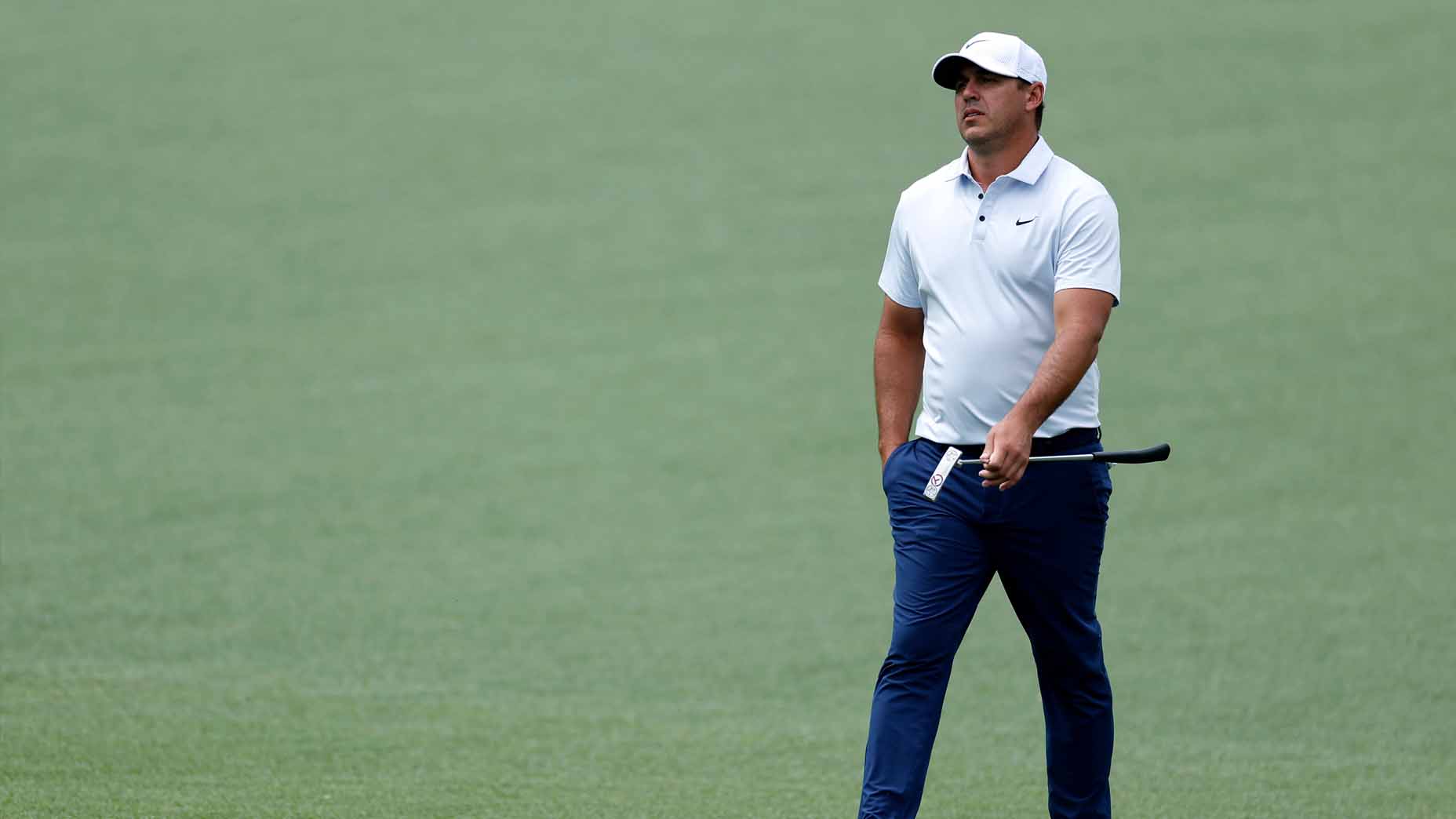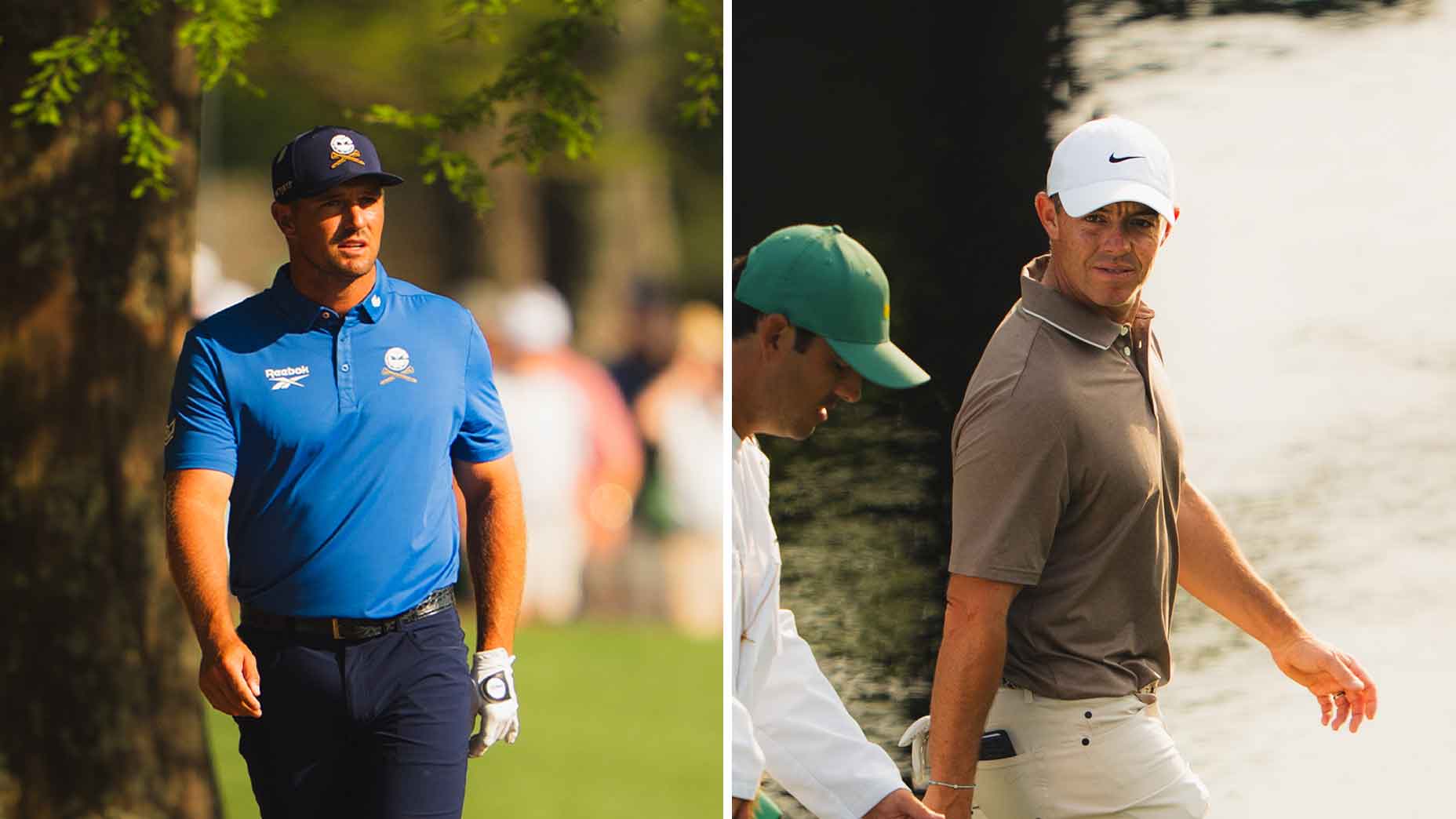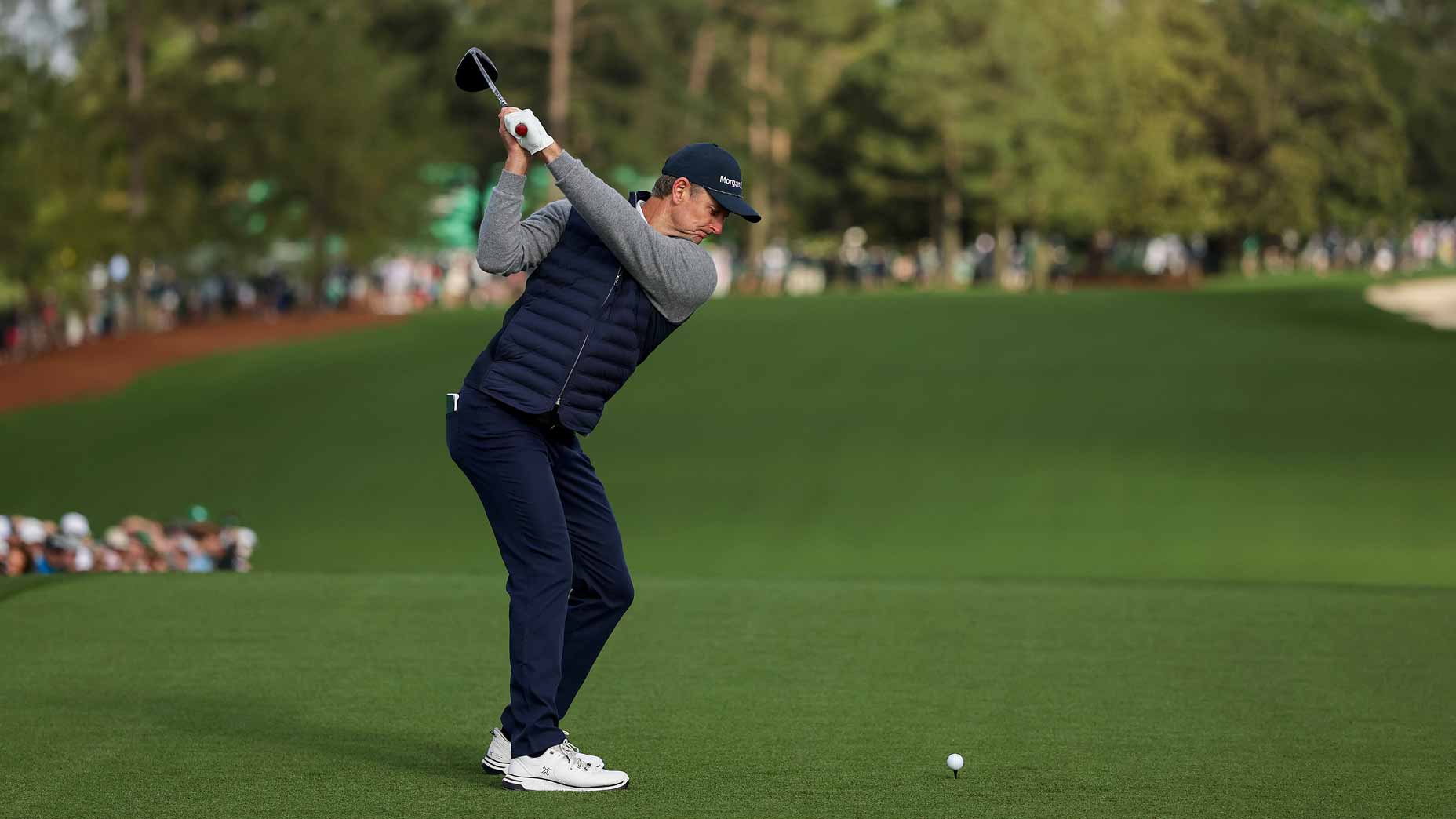 Major winner implodes on 18 to miss Masters cut in agonizing fashion
Major winner implodes on 18 to miss Masters cut in agonizing fashion
The distance dilemma isn’t unique to golf. Here’s how college baseball dialed back the long ball
A sports-governing body walks into a bar and asks for something stiff.
Stop us if you’ve heard this one before.
With the release of the Distance Insights Project by the United States Golf Association and the Royal & Ancient Golf Club earlier this week — the manifesto includes the potential of new conformance tests for clubs and balls and also the adoption of a local rule that would allow courses to require limited-flight equipment — it’s worth remembering that college baseball found itself at a similar crossroads about 20 years ago.
Much like the proliferation of 300-yard drives in the top rungs of competitive golf, college baseball — powered by highly optimized aluminum bats — was being bombarded by home runs, reaching its zenith at the 1998 College World Series in Omaha. The event saw a record 62 dingers hit over the walls of Rosenblatt Stadium, with USC topping Arizona State in the championship game by a touchdown, 21-14.
The powers-that-be said enough is enough.
“The bats were performing at a level that was changing the game, and there was real concern for its integrity,” then-NCAA director of championships Dennis Poppe told the Associated Press. “Home runs had really jumped since the early 1990s, and ‘gorilla ball’ became a trend.”
After that 1998 season, the NCAA worked with bat manufacturers to decrease the diameter of the barrel of the bat, the difference between the length and weight of the bat, and the bat’s exit velocity — all steps geared toward limiting the bat’s giddy-up.
There was brushback. Much like golf-club manufacturing, the bat business is big business. Initially there was much concern over when the restrictions would be implemented and to what degree. The sides eventually pushed forward, and in 2011, the NCAA required all aluminum bats to meet a new performance standard. In that first year, the average number of home runs per game dipped from 0.94 to 0.52. Games also sped up (no, golf isn’t the only game with a pace-of-play problem), from an average of 3 hours and 7 minutes to 2 hours and 47 minutes.
ADVERTISEMENT
Jeff Hurd, then the chairman of the NCAA baseball rules committee, told the Associated Press he received generally positive feedback about the new bats from coaches.
“That doesn’t mean it’s been universally positive,” Hurd said. “There is a tendency to say the game has changed. Those of us on the rules committee prefer to look at it as if the game is being played more like it was prior to the advent of aluminum bats.”
The golf/college baseball comparison, of course, goes only so far. Golf’s conundrum is far gnarlier, because the governing bodies are responsible for policing not only the elite levels of the game but also the amateur level, which is populated by tens of millions of casual players for whom distance is decidedly not a problem. Requiring the pros and elite amateurs to play dialed-back equipment would be one thing; making the same demand of weekend hackers would be quite another.
Still, as the USGA and R&A weigh their next steps and take feedback from all corners of the golf world, perhaps they can take small solace in the fact that golf is not the first sport to navigate the challenging waters of distance management.
To receive GOLF’s all-new newsletters, subscribe for free here.
ADVERTISEMENT








